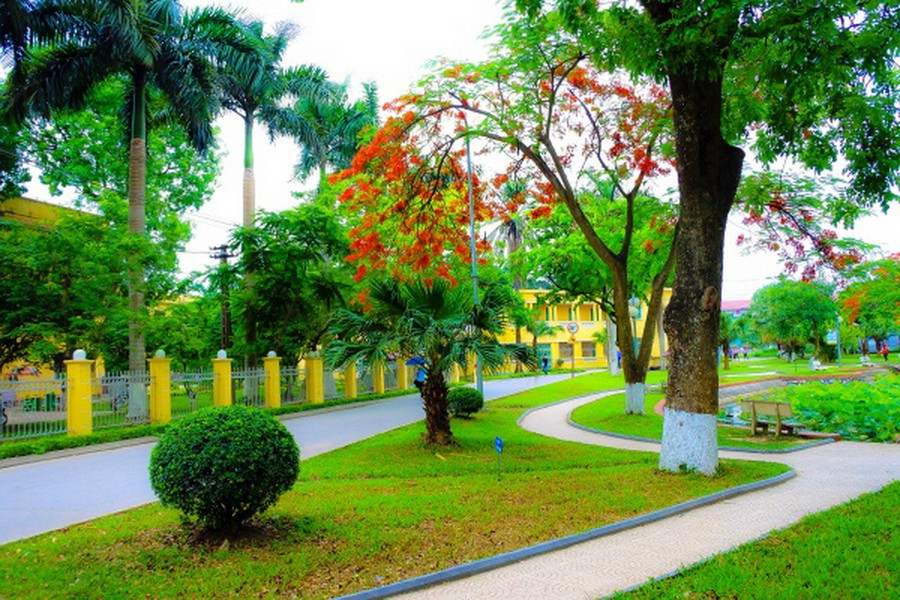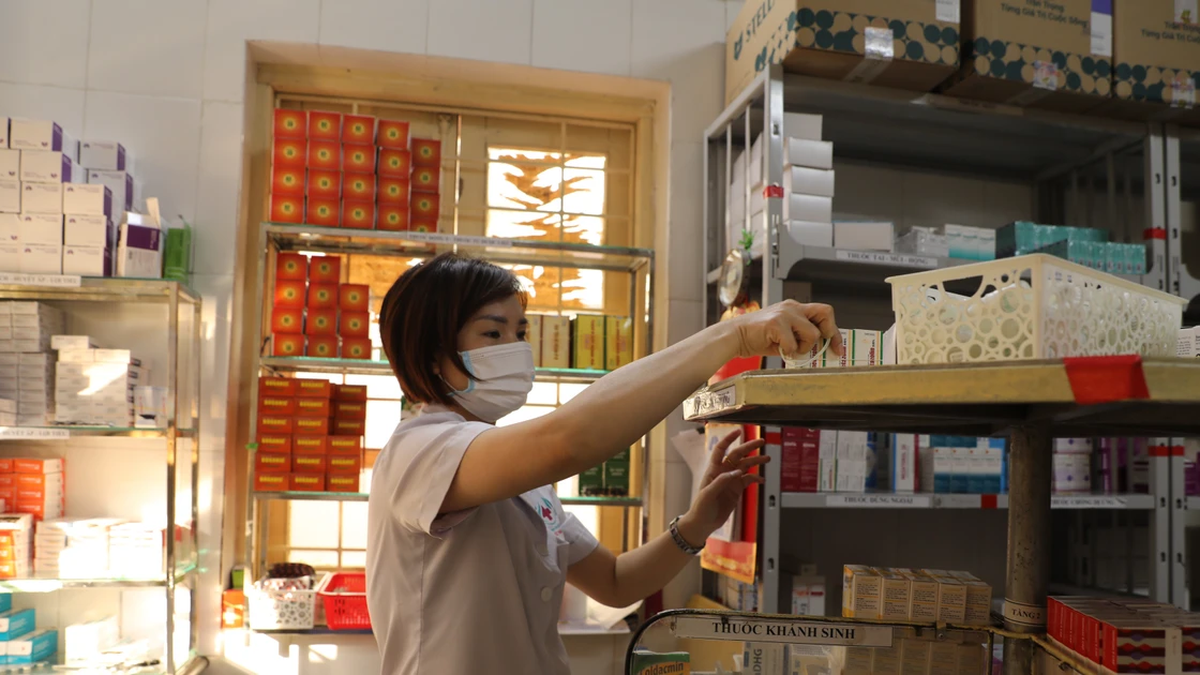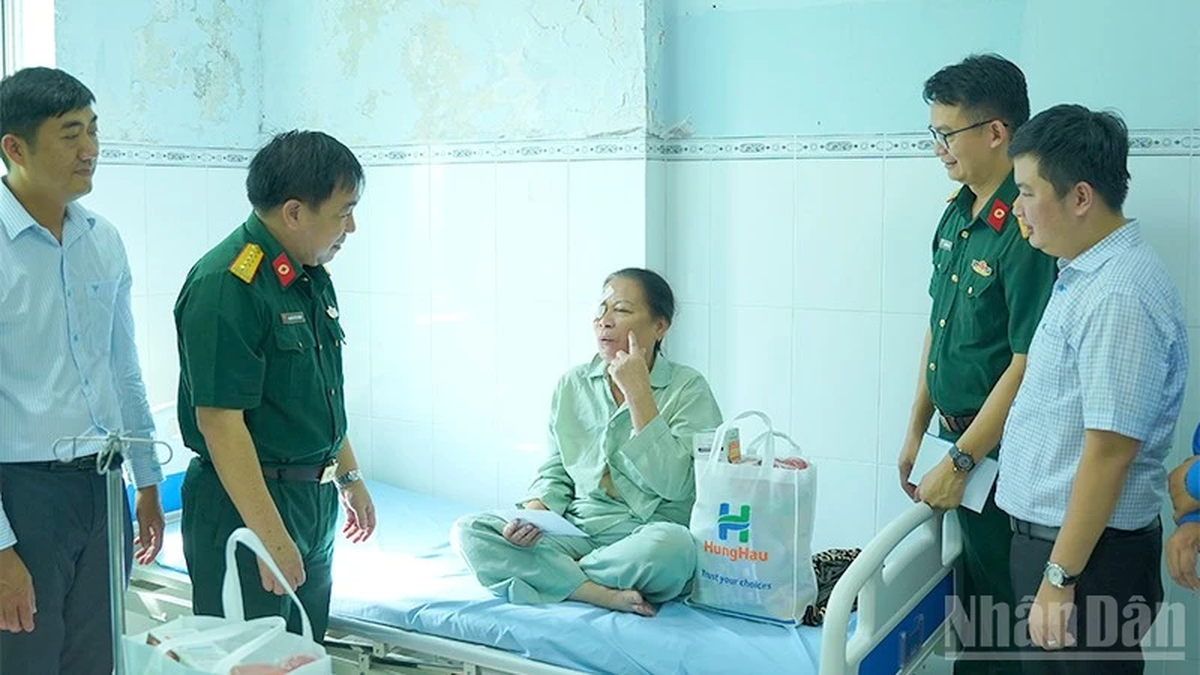However, the "greening" of universities still faces many barriers.
From “green buildings” to “green people”
As one of the pioneering schools pursuing green values since its first days of establishment, British University Vietnam (BUV) not only focuses on building green infrastructure, but also considers schools as an environment to form awareness and responsibility for the younger generation. Professor Rick Bennett - Vice President and Vice President of BUV affirmed that the school wants to become a practical model to inspire students, who will play an important role in environmental protection.
A testament to this steadfast vision is that BUV has become the only university in Vietnam to achieve EDGE Advanced certification (an international green building standard) for both campus phases, with a requirement of at least 40% on-site energy savings compared to conventional buildings.
World Bank Group members noted that green initiatives at BUV not only create a sustainable learning environment, but also contribute to raising awareness and promoting environmental action among the student community in particular and the whole society in general. BUV's campus achieving EDGE Advanced certification has placed the university among the pioneers in sustainable development in Vietnam. These efforts have helped save millions of kWh of electricity, thousands of cubic meters of water and reduce up to 112,000 tons of CO₂ emissions each year.
Not only is it an environmentally friendly project, the green space also serves the mission of sustainable education . Ms. Nguyen Thi Vinh Thuy - Senior Executive Director (British University Vietnam) emphasized that sustainable development is the focus of the school's curriculum, through courses on business ethics and responsible tourism.
Accordingly, BUV not only integrates green principles into the curriculum, but also encourages staff and students to participate in environmental protection. Students are involved in many activities through the Capacity Building and Social Skills Development (PSG) program related to sustainable development to raise awareness and social responsibility.
As a key national university in the field of agriculture and rural development, Prof. Dr. Nguyen Thi Lan - Director of Vietnam Academy of Agriculture said that the academy is currently training more than 70 majors at all three levels: undergraduate, master's and doctoral; including key majors such as: Environmental science, land management, biotechnology, sustainable rural development - directly serving the cause of agricultural development and environmental protection.
In the period 2015 - 2025, Vietnam Academy of Agriculture has announced more than 100 scientific and technological products that have been granted intellectual property certificates or recognized as technical advances. Many of these projects aim to reduce emissions, regenerate resources, and improve the ecological environment.
“In particular, the Academy is actively researching and developing measurement - reporting - verification (MRV) tools to serve the carbon credit mechanism in agriculture - one of the important contents contributing to realizing Vietnam's commitment to net zero emissions”, Prof. Dr. Nguyen Thi Lan shared.

Many challenges
From practice, Deputy Minister of Agriculture and Environment Le Cong Thanh said that the Ministry will closely coordinate with research institutes and universities to transfer high technology, apply artificial intelligence (AI), biotechnology, and remote sensing in environmental management and agricultural production, towards building a national digital agricultural environmental data system.
In addition, institutes and universities need to promote in-depth research on land, water and environmental resources to effectively implement Resolution No. 57-NQ/TW of the Politburo on science, technology development, innovation and national digital transformation.
According to the IFC Report - a member of the World Bank Group, the organization that develops the EDGE Green Building Certification System, about 50% of builders believe that high costs are the biggest obstacle to expanding green buildings in Vietnam. In particular, lack of investment sources is the biggest factor that currently limits green buildings.
However, cost is not the only barrier, because according to ARDOR Green - a green building consultancy in Vietnam, with new projects that are optimally designed and constructed, greening is completely feasible when the cost increase is only about 1% compared to the total initial investment.
Therefore, Mr. Dang Hoang Long - a sustainable design expert at ARDOR Green, believes that the slow greening of universities is due to the lack of awareness and implementation capacity, lack of green building expertise, lack of incentive mechanisms and specialized support policies... However, this is an inevitable step, for a more sustainable future, in which the educational environment is always the foundation. The greening trend has been invested in by many leading universities in the world on a large scale and implemented synchronously throughout the system.
For example: Stanford University (USA) is building an energy system that reduces 80% of greenhouse gases, uses 100% renewable electricity from 2022 and sets a net zero target by 2050. Oxford University (UK) is also committed to achieving net zero carbon and increasing net biodiversity by 2035 with a Sustainability Fund of up to 200 million pounds. Oxford is implementing a comprehensive green strategy in 10 areas, establishing leading research centers and cooperating with the government and businesses to implement low-emission zones and integrated energy centers.
In Asia, the National University of Singapore (NUS) has launched its first net-zero cluster, comprising three buildings that will feature advanced energy-saving technologies and reuse solutions. NUS has also established the interdisciplinary NUS Cities centre to develop sustainable, resilient and liveable urban solutions for Singapore and the region.
In addition, Tsinghua University (China) has adopted the Comprehensive Green University model since 1998. The campus maintains more than 57% green area, implementing energy saving and pollution reduction.
At the workshop “Sustainable agricultural development associated with environmental protection”, Vice Chairman of the National Assembly Le Minh Hoan suggested that schools, research institutes, especially training units under the Ministry of Agriculture and Environment, need to add environmental protection content to the regular training program. Accordingly, the preparation of textbooks is not only for students, but also needs to consider serving local people. Therefore, it is necessary to use everyday language that is easy to understand and visualize.
Source: https://giaoducthoidai.vn/thach-thuc-xanh-hoa-dai-hoc-post742284.html


































































































Comment (0)